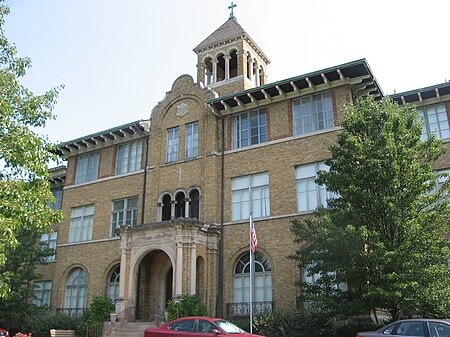St. Francis Seminary (Ohio)
1923 establishments in OhioBuildings and structures completed in 1923Buildings and structures in Hamilton County, OhioHamilton County, Ohio Registered Historic Place stubsNational Register of Historic Places in Hamilton County, Ohio ... and 2 more
Properties of religious function on the National Register of Historic Places in OhioUse mdy dates from August 2023

The former St. Francis Seminary is an historic building located at 10290 Mill Road in Springfield Township in the northern suburbs of Cincinnati, Ohio, United States. On March 5, 1999, it was listed on the National Register of Historic Places. It is now a Franciscan retirement community named Mercy Franciscan at Winton Woods.
Excerpt from the Wikipedia article St. Francis Seminary (Ohio) (License: CC BY-SA 3.0, Authors, Images).St. Francis Seminary (Ohio)
Fieldcrest Court, Springfield Township
Geographical coordinates (GPS) Address Nearby Places Show on map
Geographical coordinates (GPS)
| Latitude | Longitude |
|---|---|
| N 39.257777777778 ° | E -84.542222222222 ° |
Address
Fieldcrest Court
Fieldcrest Court
Springfield Township
Ohio, United States
Open on Google Maps







